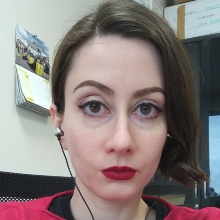We are pleased to announce that Anna Scotti, associate professor at the Politecnico di Milano (Italy), will give the SFB 1313 "Pretty Porous Science Lecture" #31. Her talk will be on "A local embedded method for flow in fractured porous media with Artificial Neural Networks".
Date: 21 December 2022
Time: 11:45 am CET
Speaker: Prof. Dr. Anna Scotti, Politecnico di Milano (Italy)
Lecture title: "A local embedded method for flow in fractured porous media with Artificial Neural Networks"
Place: If you are interested in participating in the lecture, please contact melanie.lipp@iws.uni-stuttgart.de
Abstract
The simulation of flow in fractured porous media in realistic cases is often characterized by complex geometries, and can benefit from the adoption of the so called embedded numerical schemes, in contrast with methods requiring conforming meshes. EDFM is a simple and effective way to account for fractures with coarse and regular grids, but it suffers from some well known limitations.
We propose an improvement of EDFM which aims at computing an improved coupling between fractures and the surrounding porous medium by a) relaxing the linear pressure distribution assumption, b) accounting for impermeable fractures modifying near-fracture transmissibilities.
These results are achieved by adopting local flow-based upscaling methods to compute new transmissibilities. Generally, a high number of local problems should be solved. Hence, to speed up an otherwise very costly procedure, neural networks are integrated in the model. They are trained with the solution of local problems to learn the transmissibility functions.
The new method, called Local Embedded Discrete Fracture Model (LEDFM), is implemented and tested in 2D. It overcomes the limitations of EDFM and compares well with its projected version (pEDFM). Future developments include the extension to 3D and intersecting fractures.


